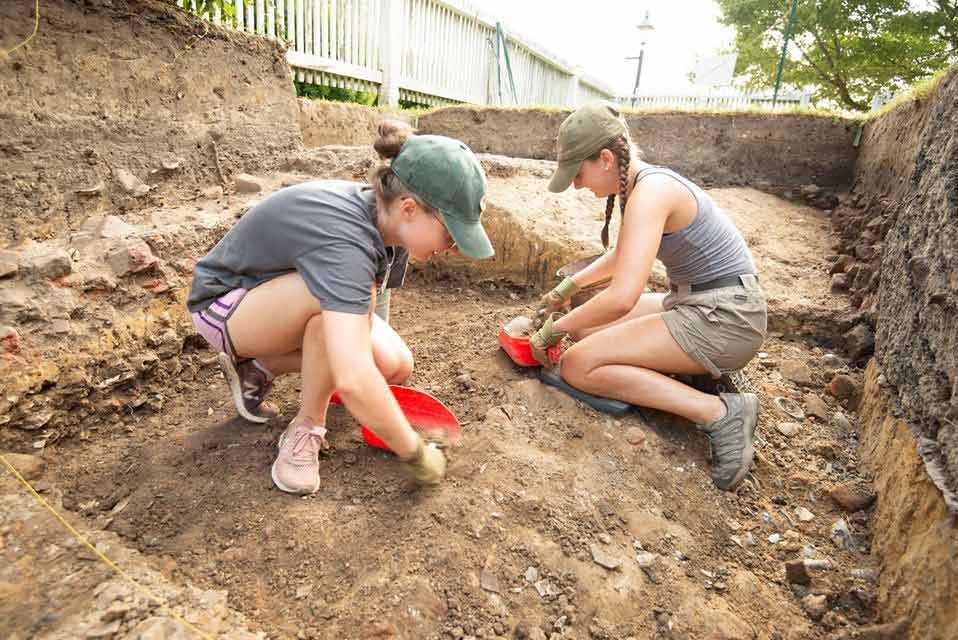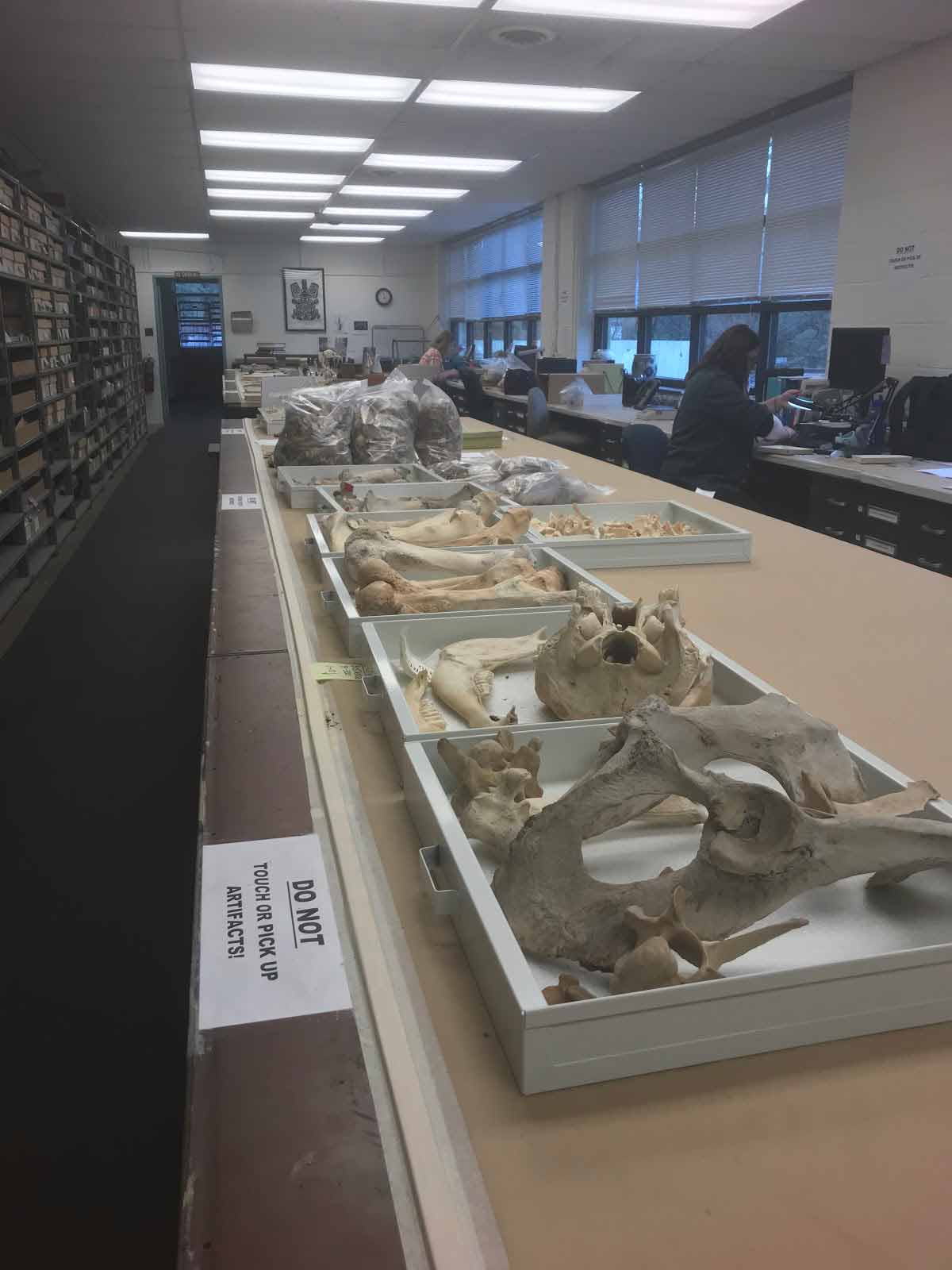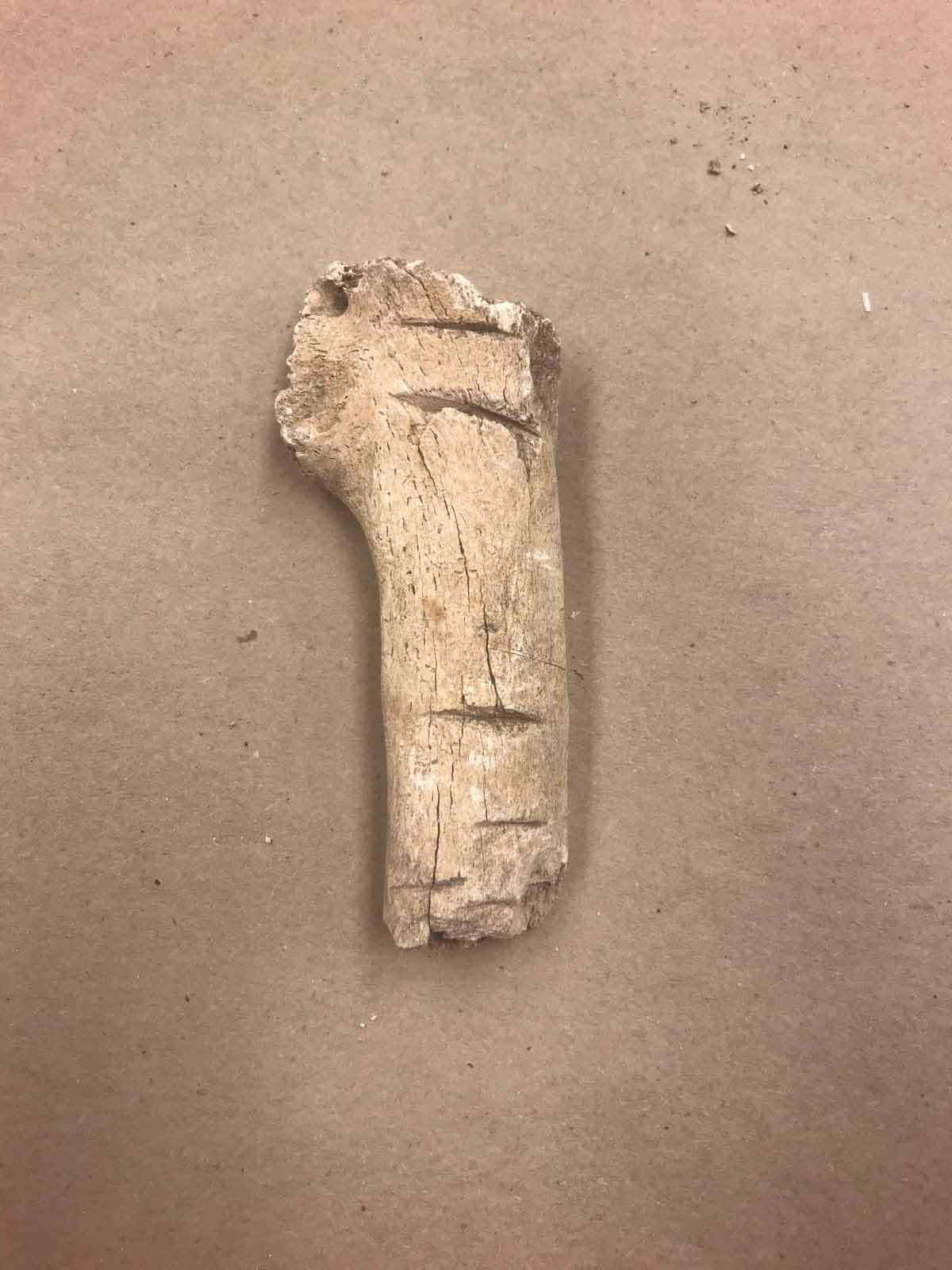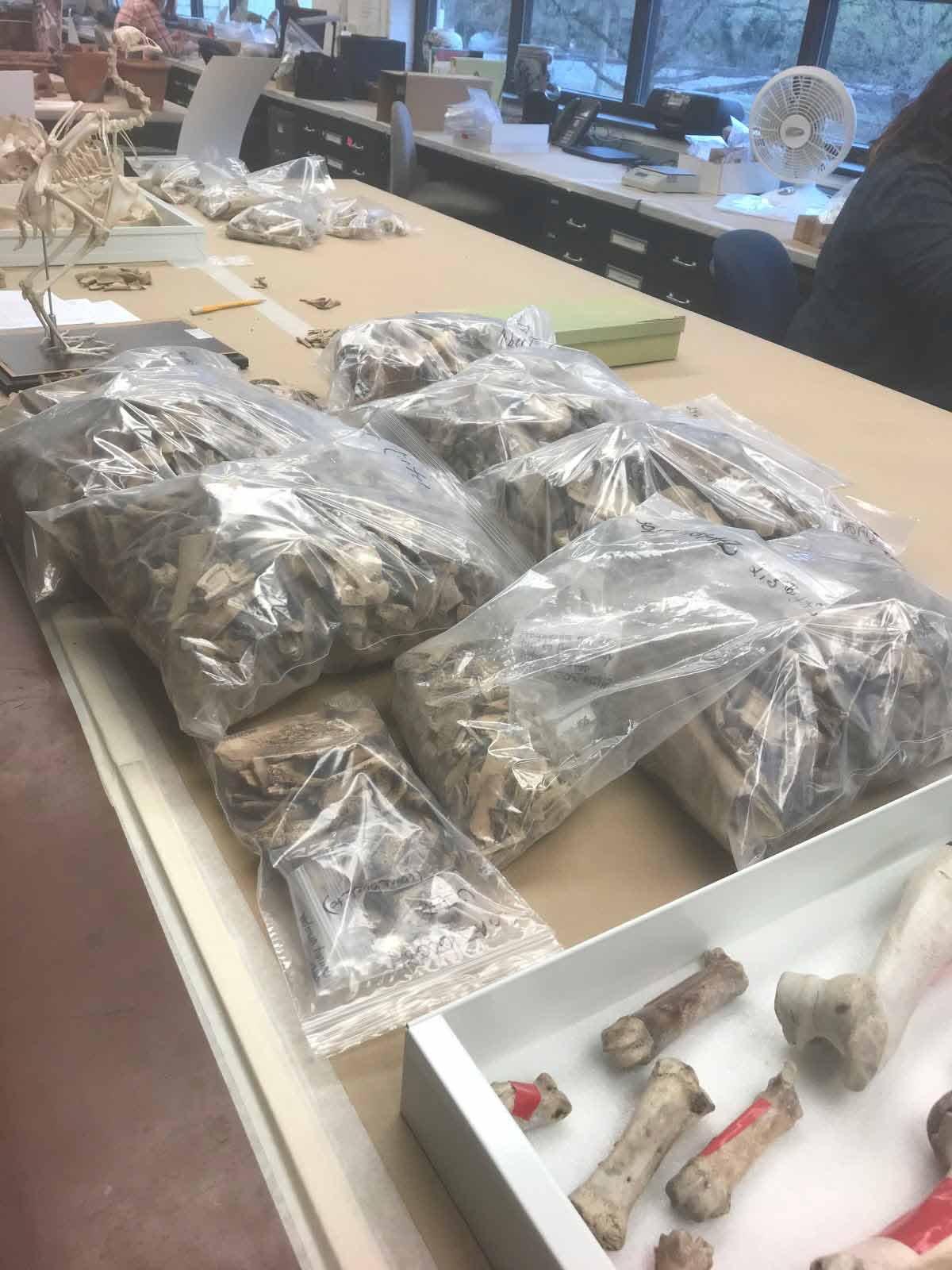Hello, my name is Katie Wagner, and I’m an archaeological field technician working on the Custis Square site with Colonial Williamsburg. However, currently my research focus in the lab involves another site that Colonial Williamsburg archaeologists and William & Mary students recently excavated: the Robert Carter house. During the past two summers, archaeological investigations at the Robert Carter house focused on a ravine between the house and the Governor’s Palace that contained a multitude of artifacts.

Notably, one layer near the base of excavations contained large numbers of wine bottle sherds and animal bones, which dated to the second quarter of the 18th century. According to dendrochronology done on surviving wooden portions of the house, the house could have been built as early as 1727 when Robert “King” Carter owned the property. Documentary evidence for the house, however, does not exist until 1746, when the property was sold by one of his sons. Robert “King” Carter was a very wealthy and powerful man in his day, serving as the president of the Governor’s council, or interim governor. Unfortunately, it is unclear whether Robert Carter actually lived at the property he built, but it is highly likely, due to the proximity to the Governor’s Palace, that whoever resided there was wealthy. On the other hand, the abundance of artifacts relating to food and drink could indicate that the house was used mainly for entertaining guests, as Carter wrote that he donated over 125 gallons of wine to be used at a celebration in Williamsburg. The animal remains in the wine bottle layer of the ravine serve as an exciting opportunity to look at the diet of the elite in early 18th-century Williamsburg, and how wealth may have been a factor in what and how they were eating.
The first step I have to take in order to understand the diet of the Robert Carter household is to identify the animal remains to the most specific level I am able. In many cases, I can tell whether a bone is from a pig, cow, or chicken by comparing bone fragments from the site to animals in my comparative collection (Figure 2). A comparative collection consists of skeletal remains of known animals of various species and sometimes different ages, as bones get larger and fuse as they age. If the shape and size of the bone fragment matches one of the bones in my comparative collection, then I have identified it! So far, I am almost halfway through my collection from the Robert Carter house and have identified 250 bones to the species level.

While I catalog the species and segment of the bones found, I also pay attention to whether the bones have been butchered. There are several different methods of butchery, which all leave different types of marks on the bones. A cleaver or ax can be used to chop the meat into larger cuts and can leave large marks on the bones (Figure 3) or even shear the bone in half.

Saw marks look similar to sheared bones but have striations from the back and forth movement of the saw. However, saws weren’t popular until the 19th century, and so far, I have not found any of these marks in my collection. There may also be large fractures in the bones caused by an impact meant to break open the bones to get to the marrow. Finally, knife marks appear as thin lines on the bones, and can result from cutting the meat of the bone or a diner cutting into their meal.
After all the bones are cataloged, I can analyze my results in several different ways. One of my questions is which animals were being eaten? So far, I have identified remains of cattle, pigs, sheep/goats (their bones are remarkably similar in shape), deer, chicken, turkey, and one possible goose. Perhaps surprisingly, I have not identified any fish bones yet, but there are still several bags of artifacts to go (Figure 4)!

The proportion of different animals that were eaten can reflect status. For example, Joanne Bowen, former zooarchaeologist for the Colonial Williamsburg Foundation, discovered that the elite of the Chesapeake were eating more beef and mutton as compared to their less affluent counterparts. I can compare proportions in three different ways. First, I could simply count the number of bones of each species and compare them. Second, I could calculate the minimum number of individuals for each species, which takes into account that a femur, for example, may be broken into several small pieces, but only represents one bone from a single animal. Finally, I can calculate the biomass from the weight of each of the bones, which accounts for the fact that you can get more meat from a cow than you can a chicken.
I can also answer questions of status and wealth in diet by analyzing the butchery marks on the bones and looking at which cuts of meat were most common. For example, the feet of an animal do not contain much meat, and therefore were not desirable cuts. I would expect there to be fewer of these cuts at an urban, wealthy household, especially if they were buying their meat elsewhere and not butchering animals on their property. I will also examine which cuts of meat were more common — were they buying the fattier portions used for stews and roasts or the leaner portions used for steaks? Are the cuts of meat larger, indicating wholesale cuts, or smaller, indicating individual portions? Hopefully, as I identify more of the bones in this collection the answers will reveal themselves!
Katie Wagner is an archaeological field technician with Colonial Williamsburg. She graduated with her M.A. in Historical Archaeology from UMass Boston and did her undergraduate at William & Mary. Katie has previously participated in excavations in Plymouth and Iceland.
